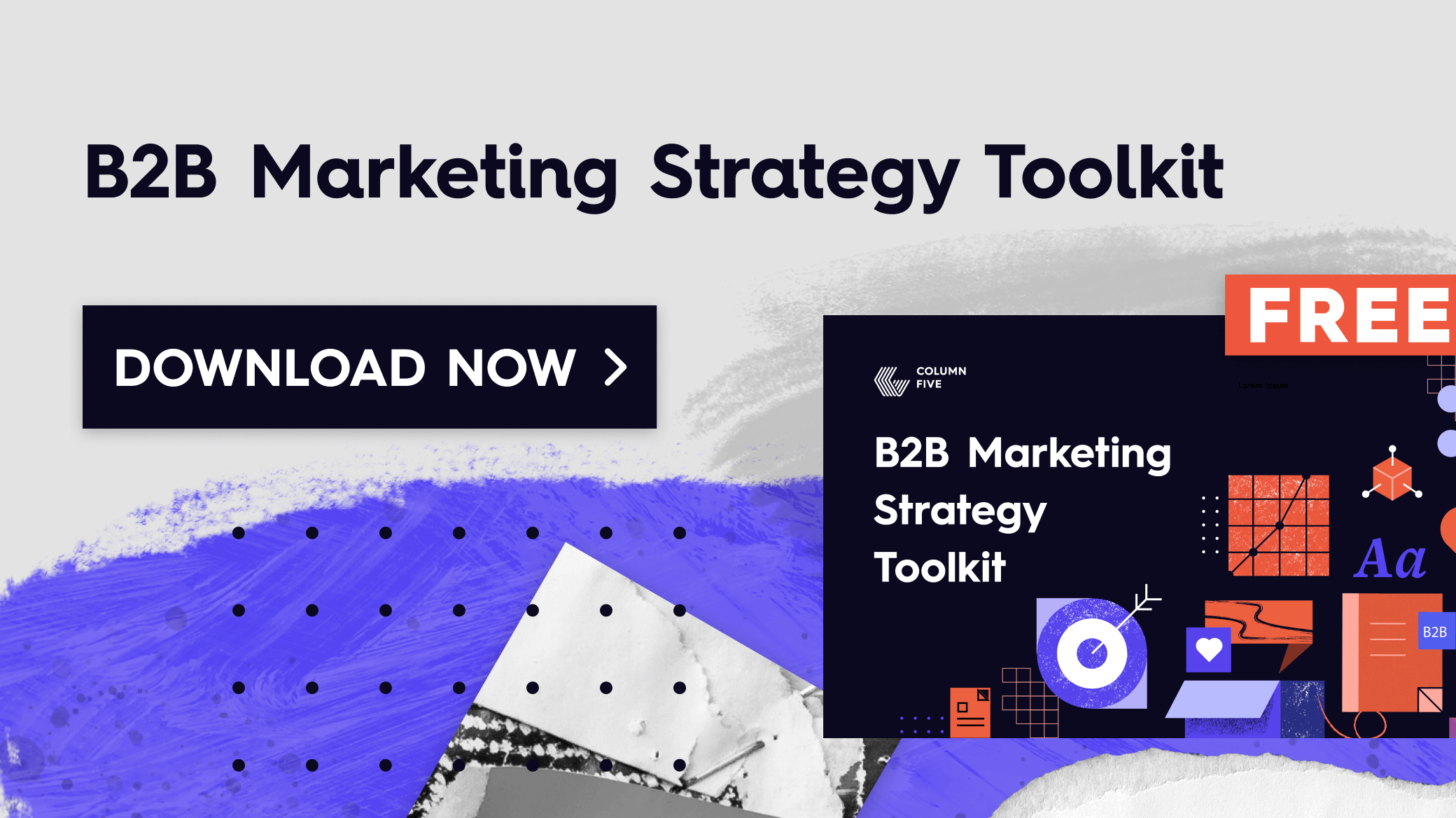According to the 2023 State of Marketing AI Report by the Marketing Artificial Intelligence Institute, 98% of marketers already use AI in some way. But with more tools on the market, and more pressure to instantly adopt them, it’s easy to become overwhelmed. Which tools should you use? What’s the smartest way to use them? What helps you work smarter, not harder? If you’ve been asking yourself these questions, you’re not alone. (In fact, the Marketing Artificial Intelligence Institute reports that CMOs have lower AI understanding, usage, and purchasing confidence compared to other C-suite execs.) So how do we, as marketers, close that gap? By using strategic AI marketing hacks as we build our marketing strategies.

30 AI Marketing Hacks to Make Your Life Easier
Here, you’ll find a roundup of quick and dirty tips to use AI in your day-to-day marketing practice. From time-saving tips to helpful hacks, these are some of the best ways to make AI work for you—and maximize your results in the process. (Oh, and we know they work because we use them ourselves.)
1) Find your audience’s pain points.
When you’re creating marketing personas, you can spend hours tediously combing through customer research, data, studies, etc. AI can help you research and surface important insights you may not have been aware of, particularly when it comes to the unique challenges your audience faces.
Tip: Ask AI to research and synthesize the biggest pain points for your target audience. Even if you are using internal data, ask for external data, including sources. This can help you find more enlightening information in a snap, saving you hours of market research.
2) Segment your audience.
The more you segment your audience, the easier it is to tailor your content and increase relevance and engagement. Once you’ve done your audience research to understand who they are, you can further refine to group them into personas effectively.
Tip: Use AI to segment your audience based on demographics, behaviors, needs, interests, etc.
3) Research the latest trends.
One of the most challenging and exhausting parts of marketing is keeping up with trends in an ever-changing world. It’s easy to fall behind on best practices, so AI can be a great way to fill that gap when you don’t have hours to dive into the latest news.
Tip: Ask AI to spotlight some of the latest trends, best practices, or research in your niche, and share the insights with your team. You can also share those same insights on social media—a low-lift way to keep your feed full of rich content.
4) Analyze your top 10 competitors.
Competitor research is always time-consuming, but AI makes it significantly easier by identifying and extracting the most relevant information about your competitors.
Tip: One easy way to gain quick insight is to ask AI to look at your closest SEO competitors and identify their strengths and weaknesses compared to your site.
5) Refresh old blog content.
It’s important to keep your site content fresh to increase your SEO rankings. Re-optimizing older, outdated content is one of the best ways to do this. AI can make it easier by helping you source new info or rewrite existing content.
Tip: Use AI to generate fresh headlines, updated research, new tips, etc.
6) Repurpose existing content.
We’re big fans of repurposing content, as it’s one of the lower-lift ways to maximize your work across social platforms. But coming up with those creative ways to condense or repackage content takes more brain power you may not have.
Tip: Feed a piece of existing content to AI and ask how it would repurpose it across your preferred social platforms. You may tweak or refine the ideas for your audience and goals, but it’s a great starting point (and will often show you new ways to use content that you haven’t thought of before).
7) Optimize landing pages.
From messaging, to layout, to design, AI is a fantastic tool to build out strong landing pages that increase conversions. Whether you’re building a new page or reoptimizing a current page, it can help drastically improve your results.
Tip: Use AI to generate copy, headers, CTAs, etc. to find the most compelling mix for your audience.
8) Create a social strategy.
Social is a crucial component of any marketing mix (especially as SEO becomes more competitive). AI can help you build a smart, data-driven strategy that reaches the right people and increases engagement.
Tip: Feed your goals and audience to AI, and ask it to identify the best platforms for your audience, the best type of content to create, how often you should publish, and what type of content is best for maximum engagement.
9) Create Twitter threads.
Twitter threads are one of the best ways to share thought leadership and deliver value to your followers. AI can make them even easier to create, whether you’re sharing roundups of new insights, tips, or data.
Tip: Ask AI for specific tips, data points, or examples on your preferred topic. Regenerate the responses, and use each answer as its own Tweet in the thread.
10) Find influencers in your industry.
Influencers (and micro-influencers) can be powerful partners to help you expand your reach and build community. (This is especially true if you’re entering a new market and need to build brand awareness.) But finding the most plugged-in people takes a lot of time.
Tip: Ask AI for the top influencers in your particular niche (for each social platform). This will give you a great list of people to follow and engage with. Reposting their content is also a great way to build your relationship and curate an interesting feed on your own channels.
11) Map out calendars or project timelines.
It’s those tedious tasks that take up the most time in marketing. But AI can easily build out a social calendar, editorial calendar, or even a project timeline. (This is especially helpful around launches of new products or specific campaigns.)
Tip: See Jayant Padhi break down exactly how to create a content calendar customized for your goals.
12) Synthesize a piece of content.
Whether it’s an article, deck, or long company email, one of the best ways to save time and brainspace is to have AI review information, synthesize it, and deliver you the highlights.
Tip: Ask AI to review and give you key takeaways to ensure you’re getting a useful, condensed version of the text.
13) Find content gaps.
When you’re so immersed in content planning, day in and day out, it’s easy to overlook ways you can strengthen your buyer journey. AI can help you identify those blind spots and create content to stand out in the marketplace.
Tip: Ask AI to analyze the gaps between you and your top SEO competitors. This will give you insight into the type of content you should be creating, as well as new subjects to build on.
14) Research new tools.
We are living in the golden age of automation, as more and more AI-powered tools are at our fingertips. But when your inbox is filled with the latest this and that—and your schedule is increasingly full—it’s hard to find the time to properly compare tools and understand which may serve your needs best.
Tip: If you’re looking at a particular type of tool, ask AI to compare the top 5 and provide pros and cons. (This can save you hours in calls with sales reps.)
15) Create an AI agent.
AI-powered chatbots, agents, and assistants can help you better serve your customers, create more personalized experiences, and save your team time answering common questions.
Tip: See Nick Dobos’ breakdown of how to create your own AI agent.
16) Write creative briefs.
When you’re a content marketer, you can spend hours creating briefs for every project you’re working on. Whether you need a brief for your next brainstorming meeting or product launch campaign, let AI take that task off your plate.
Tip: Use AI to generate briefs based on repeatable templates to save you time (and ensure your briefs are consistent).
17) Write marketing reports and decks.
Regular reporting is important to keep your team informed and keep track of your success, but it can be a tedious task that eats hours (even with templates). AI can easily help you build out reports, synthesize data, and proofread, saving you time and energy in the process.
Tip: Ask AI to extract the most interesting data insights from your analytics, or feed it a report template to sort and effectively present other information.
18) Create an AI-powered search bot for your blog.
If you’ve been in the content marketing game for a while, you probably have a healthy library of articles and relevant content. You can make that content more visible by adding an AI-powered search bot to help your audience find and engage with your content.
Tip: Build your search bot based on the categories you write about. You can see how Seth Godin has made great use of this tool on his own blog.
19) Rewrite your website CTAs.
CTAs are one of the most powerful pieces of copy, yet due to limited word count, it can be tough to write a compelling CTA that really grabs people.
Tip: Direct AI to generate CTAs based on your specific audience, tone, character count, etc.
20) Write stronger email subject lines.
Just like CTAs, your subject lines are the first thing people see when they interact with your emails. It’s also increasingly difficult to make them stand out in someone’s inbox.
Tip: Tailor your subject lines to speak to your audience’s unique pain points, interests, etc. Generate variations based on different emotions.
21) Personalize emails.
Beyond subject lines, writing full marketing emails can also be a chore. But there are easier ways to do it by using tools that help you write strong emails that speak to your audience.
Tip: Direct AI to write an attention-grabbing hook for your first line, then ask it for body copy that communicates the required info. (Again, direct it to use the right voice and tone for your unique audience.)
22) Build email automation workflows.
AI-driven email automation workflows nurture leads and guide them through the customer journey. But setting them up, and crafting the right emails to go with them, can be tedious.
Tip: Ask AI to send personalized emails triggered by user actions or behaviors.
23) Brainstorm drip campaigns.
Email marketing is one of the best ways to nurture leads, but you need to feed your subscribers a steady stream of engaging content. AI can be a fantastic tool to help you brainstorm drip campaigns or retargeting campaigns that will connect with the right people.
Tip: Ask AI to brainstorm different ideas that would appeal to different audiences and encourage them to take a specific action. This helps you hone in on the most interesting and relevant content for your goals.
24) Write stronger headlines.
Catchy headlines are so important to make your content stand out, but they can often be the last thing you write after finishing an article. Luckily, AI makes it that much easier to churn out keyword-rich and attention-grabbing headlines.
Tip: Ask AI to write a variety of headlines that focus on different emotions: surprise, fear, intrigue, etc. You can then test to see which types of headlines resonate with your audience.
25) Create a campaign messaging matrix.
AI can certainly help you generate great campaign ideas, but it can also make your job that much easier by generating effective messaging to help you better connect with people across different channels.
Tip: Ask AI to generate a full messaging matrix, including target audience, key messages, value proposition, tone, messaging for each channel, and related CTAs.
26) Write case studies.
Case studies and testimonials are a great way to demonstrate social proof and build credibility, but they need to be presented in a compelling narrative form.
Tip: Beyond the core customer success story, you can also ask AI to generate compelling, results-driven headlines that capture people’s attention.
27) Write catchy social captions.
Social media best practices are constantly changing on every single platform. AI can make it easier to write and refine content quickly to make sure everything you post engages your audience.
Tip: Ask AI to generate captions, hashtags, CTAs, post copy, etc. tailored for each platform and unique audience.
28) Brainstorm interactive or contest ideas.
There are so many ways to connect with your audience through content, especially on social platforms. Contests or interactive experiences are particularly great to build community and engage people, and they can also be a great tool to show off your brand personality in unique and creative ways.
Tip: Use AI to brainstorm fun contest ideas (bonus points for a creative contest name). And if you’ve already identified your content gaps, ask AI for interactive ideas that may help you engage people around those topics.
29) Improve lead qualification.
AI can score and qualify leads more accurately by analyzing various data points. Focus your efforts on leads most likely to convert, saving time and resources.
Tip: See Bardeen’s hacks to build lead-prospecting automations that save time.
30) Use it for A/B testing.
Whether you’re testing a new homepage layout, landing page, ad copy, or subject line, A/B testing is your friend. But coming up with two different versions of content can be draining.
Tip: Feed your current version to AI, and ask it to create an emotion-driven alternate version that encourages your audience to take a specific action. You can then test to see which elements lead to higher conversions.
How to Make AI Work for You
As AI continues to evolve, and you incorporate it into more aspects of your marketing operation, you will continue to learn and experiment with the best applications for your unique goals. That said, AI is not perfect. It still needs a critical human mind to feed it the right prompts and review the content it generates. Luckily, there are a few ways you can improve your results and work better together.
- Be specific. The more detail you give AI, the better your results will be. For example, don’t say, “What are the biggest problems in the tech marketing space?” Instead, say “What are the daily challenges startup CMOs at SaaS companies face?”
- Ask one thing at a time. You’ll get more specific and thorough answers if you can break your questions into pieces. For example, instead of asking, “What are the best tips to find your audience, market your product, and maximize revenue?”, break each component into its own question.
- Regenerate responses. When you’re asking for ideas, headlines, copy, tips, or takeaways, regenerate responses to get more variety. You should also refine your questions (again, think specificity and focus) if you’re not getting helpful responses.
Lastly, if you want to put AI into practice more thoroughly throughout your organization, you need an AI-savvy partner. If you’re on the hunt, learn more about how our team approaches AI marketing, and reach out to find out how we can do it for you.






Thanks for sharing such a valuable post with us. I am gonna bookmark this site. I have also seen your post it is awesome!
Thanks much!
Great, It serves as a valuable resource for marketers seeking to harness the power of AI to elevate their marketing efforts.